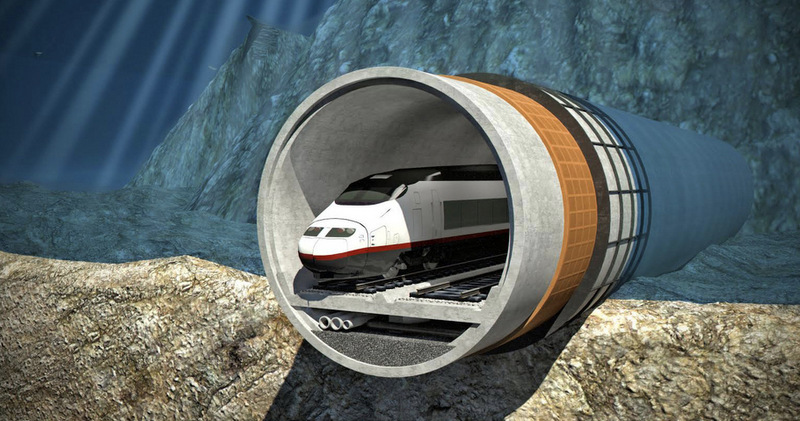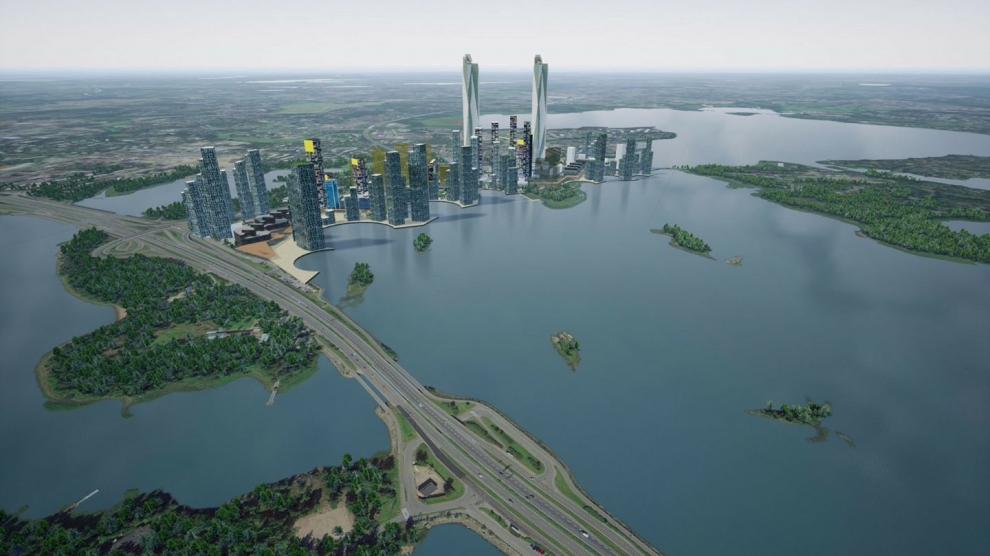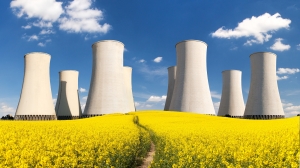A tunnel linking Tallinn with Helsinki may no longer be a pipe dream, but obstacles to the ambitious project remain.
In May 2016, Finnish development company FinEst Bay Area, led by Finnish entrepreneur Peter Vesterbacka – a former executive at the company behind the Angry Birds game – began working on an unprecedented project: to construct a rail tunnel between the Estonian capital Tallinn and the Finnish capital Helsinki. The aim of the tunnel is to connect the two cities with the latest in rail technology and spur economic growth and development to the region.
However, the project is facing mounting criticism. Some parties believe the push to get it completed by 2024 is too unrealistic. Others see it as far too accommodating of China’s Belt and Road Initiative.
A ferry compelling case
Currently, 10,000 Estonians commute every day to work in Helsinki by taking a two-hour ferry ride, while many Finnish tourists cross the Gulf of Finland each weekend to take advantage of Tallinn’s gorgeous Old Town and Estonia’s relatively low alcohol prices. The proposed tunnel would connect the two capitals via a 100-kilometre underground rail network, shortening the commute to 20 minutes. Supporters of the project note that this is what many commuters would spend getting to work in the same city, let alone another country.
Unsurprisingly, there has been a lot of talk in the region about the project, many seeing it as a positive for the entire European continent. Anne Berner, then Finnish transportation minister, noted in 2018 that the tunnel would, together with the Rail Baltica railway project and the Arctic railway line, “connect the Arctic region with the heart of Europe via Finland. The tunnel could thus be a significant project for all of Finland and Europe, not only for Helsinki and Tallinn.”
The tunnel will make use of unprecedented technology in order to future-proof the project. The tunnel diameter is to be a huge 17 metres, keeping the possibility open for “more than just trains” in the future. Two tunnels will be constructed in order to have multiple trains operating simultaneously. This of course leaves sizeable amounts of rock to be removed. The plan is to turn the rock into two islands 15 kilometres from the respective coasts. The larger island, off the coast of Finland, is set to become an entertainment centre with shops and businesses, with the developers planning on making the island a destination in its own right.
“The artificial island will mainly be built for technical and safety reasons, providing such things as emergency exits and ventilation,” Kustaa Valtonen, a FinEst Bay founding partner, tells Emerging Europe. “A second reason is environmental, as it is the best location for the extracted rock. Thirdly, the economic benefits are big. The island will be a future-proof city with energy positive status and will be fully SDG compliant. There will be no cars but walkways to make moving around easy, with modern last-mile delivery solutions to support a happy life.”

Not all about cost
The project also has sizeable economic benefits for the region. Connecting the two capitals will increase the exchange of capital between them as well as forging closer business ties. Moreover, the project itself has an emphasis on employing local and regional workers. According to Mr Valtonen, the projected employment impact for Finland and Estonia is 24,000 and 6,000 jobs respectively.
However, a 2017 public feasibility study published by the Finnish and Estonian governments projected that that by 2050 annual demand for the tunnel would stand at 12.5 million passengers and four million tonnes of freight. This gave the project a cost benefit ratio of just 0.45. The Estonian European Commission Director General for Mobility and Transport Henrik Hololei has questioned the tunnel’s necessity, stating that: “We are speaking of an investment in the range of 15-20 billion euros, even though today we have ship connections which ensure relatively fast transit from Tallinn to Helsinki. I am absolutely certain that if this tunnel should materialise, it will not make things cheaper in any way for the passenger.”
In spite of this, the feasibility study projected that it was also predicted to provide a regional development boost of 4-6.9 billion euros annually. This injection into the economy was seen to outweigh the potential lack of use of the tunnel, leading the report to conclude that construction should go ahead.
That same study also put the project completion date at 2040, not December 24, 2024, as projected by developers. In July of this year, Estonia’s public administration minister, Jaak Aab, restated that the project was unrealistic. However, when Emerging Europe asked the developers what they made of this government study, Mr Valtonen said that “the pre-feasibility study was very pessimistic in its approach. Our estimate is based on the designers and constructors capabilities and is very realistic,” further noting that it is better to trust their own figures of estimation.
Chinese whispers
This is not the only controversy to hit the project. Much of the funding has been secured from Chinese-owned companies, raising some questions amongst critics. As much as 15 billion euros in funding has been sourced from the Chinese Touchstone Capital Partners, which owns a minority stake. In July, a memorandum of understanding was signed with the China Railway International Group, China Railway Engineering Company and China Communications Construction Company, as well as Touchstone. When prompted about the stake of Chinese investment, the developers noted that less than half of the funding was coming from Chinese-owned companies.
“Our goal is to also secure European, Nordic and Finnish capital investment in addition to the already agreed financing arrangement. We are looking for a sustainable and fully-balanced financing solution for the project,” said Mr Valtonen, who suggested that looking towards China had more to do with technology, in which China is a world leader.
However, Estonia’s economics minister, Taavi Aas, noted in a recent interview with Bloomberg that: “We need a clear understanding of where the money is coming from and in what amount. Where are the guarantees that it will be completed?”
Mr Hololei has voiced similar concerns, warning that Chinese investors must act within accordance with EU rules and regulations, saying in March that: “All investments that come to Europe from third countries are welcome if they are guided by European rules.”
Some critics view the project as being part of the Chinese Belt and Road Initiative (BRI) – a state-sponsored infrastructure and development programme that is currently investing in 152 countries across the world, which aims to push for Chinese dominance in global affairs by creating a Chinese-centred trading network.
Mr Valtonen insists, however, that “Finest Bay project is not part of the BRI programme,” arguing that if there are synergies, these are coincidental, and pointing to a similar situation with the European Union’s TEN-T project.
‘It would be stupid not to build it’
There is no doubt that the project is one of the boldest Europe has seen for decades. The developers claim that the tunnel will last until “after the next ice age”. They see the project as unique and pioneering, and despite the apparent hurdles and criticism, if completed successfully, the Helsinki-Tallinn tunnel is set to be the largest and longest tunnel of its kind, bringing many benefits to the region.
When asked in a recent interview if the project would happen, or if it would be forgotten in a few years, Peter Vesterbacka responded with the words: “It’s too late to be forgotten. It’s too important. I don’t think we can afford not to build the tunnel. It’s for the future of our countries, it would be stupid not to grab the opportunity and make this real.”






[…] appeared to suffer a sudden death in 2020 due to concerns over Chinese finance, the world’s longest undersea rail tunnel planned to link Helsinki, Finland, with Tallinn, Estonia might be back on track. Revival of the […]
[…] Il tunnel Tallinn-Helsinki: il progetto più audace d’Europa da anni […]
[…] The Tallinn-Helsinki tunnel: Europe’s boldest project in years […]